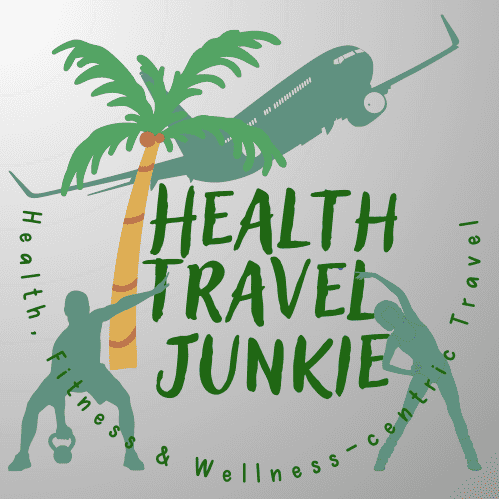Oslo is the most expensive city in the world. For tourism, it’s barely worth visiting, but it can be a starting point for a trip to Norway’s Fjords. Also hiking in the countryside, or perhaps you could take the train to Bergen, the second largest city.
Since the country is surrounded by the ocean, the local diet includes a lot of fish. Plus, due to the cold weather, Sauna culture is very much alive in Norway. Lastly, you’ll encounter health-conscious attitudes. As in other Scandinavian countries, Norwegians don’t have a high obesity rate.
Contents
Food in Oslo
There are plenty of juice bars in Oslo like Joe and the Juice. However, it is too expensive at $10 or more for a decent juice. It’s cheaper to buy a small blender for $20 and prepare your own smoothies or juice, while on the go.
If you’re on a tight budget, try the falafel wraps (55 Kroner) at the Arab kebab shops, which is the cheapest food you’ll find in Oslo. Otherwise, stick to shopping at the local grocery stores (e.g. Rema 1000). Below, find some healthier (and relatively inexpensive) foods bought at Rema. For the price in Euro, roughly divide the Kr price below by 10.
- Ecological Kefir (23Kr)
- Almond Milk (34kr)
- Popcorn (6kr)
- blueberries (12kr)
- watermelon (14kr)
- banana (4kr)
- chicken salad (40kr including the salad dressing)
- green juice (20kr)
- baked vegetable crisps (20kr)
- vegan sushi (29kr)

The Rema supermarket’s salad bar is one of the best options for an affordable healthy meal. The price is less than a falafel shawarma. But its much better value for money since the shawarmas in Oslo tend to be small and stingy. Moreover, there are plenty of sushi in the grocery stores. These are specifically made with local Norwegian salmon. In addition, you’ll notice imported Swedish products like Knackebrod (dried Rye bread).
A useful money-saving tip is to bring along a few non-perishable snacks in your luggage when traveling to Oslo.
Is Oslo’s Tap Water Safe?
Unlike in many other countries, there’s no added dangerous Sodium-Fluoride chemicals in Oslo’s tap water. Since mineral water is very expensive, it makes sense to simply drink the (relatively safe) tap water.
Norway is Anti-tobacco
Norway’s government strongly discourages tobacco use. In most other countries, cigarettes are openly displayed at the cash register counter. But in Norway, you’ll only see Nicotine chewing gum (to help you quit smoking). Tobacco is hidden away from view behind the counter. This includes the snus tobacco which you can read more about in the Stockholm post.
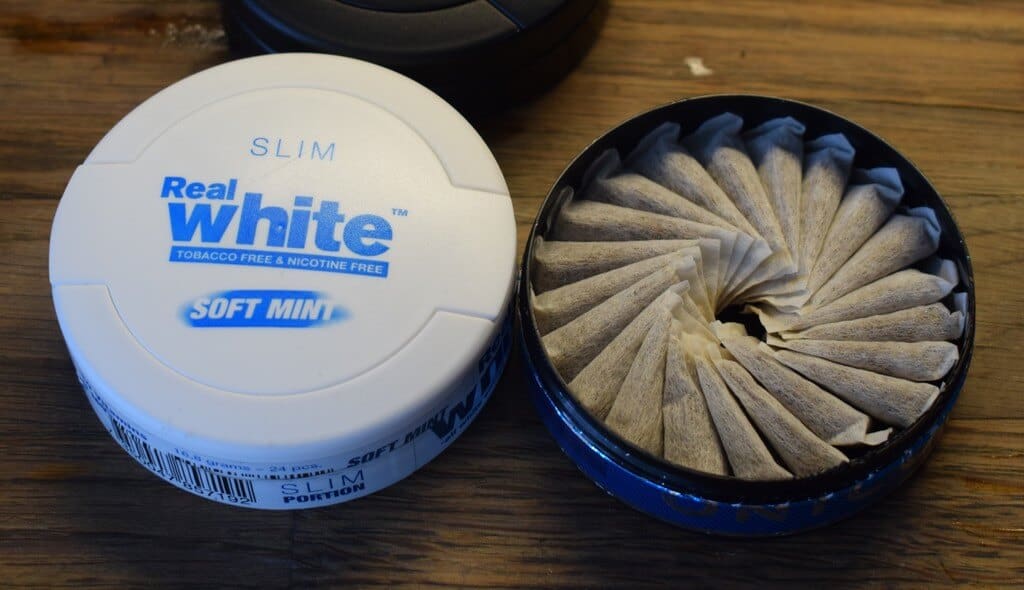
Along with the regular snus (which is illegal to sell in most of the EU – except Sweden), grocery stores in Oslo also sell nicotine-free snus. With this variety, you get the same light burning sensation underneath your lip, but nothing more. No headrush. No good feelings. It’s basically a placebo product. Some nicotine-free snus contains xylitol, along with peppermint flavor. So its like a tiny sugary pouch you put underneath your lip. This can be useful for nicotine addicts trying to quit snus, but otherwise, there’s no point in using it. Some of these pouches get bleached white so that it doesn’t stain your teeth like the normal variation.
Oslo Restaurants
Nordvegan
Nordvegan is a decent vegan option in central Oslo. Their main meal is a bowl, with either noodles or rice and a wide variety of local vegetables, including Brocolli, Beet, Fried Mushrooms, Brinjal, cauliflower, along with an Asian sauce. They serve free tap water with the meal. There is no wifi available. The bowl is very expensive at about 210Kr for a large bowl and 160Kr for a small bowl.
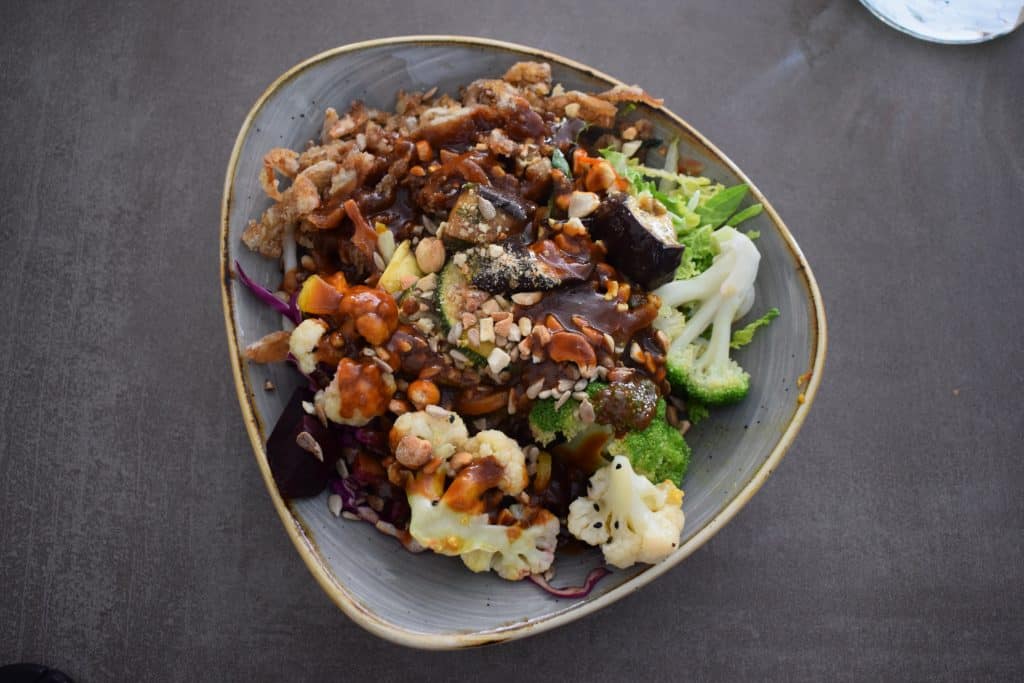
The Loving Hut Restaurant
The Loving Hut is a well-known vegan chain restaurant. in Oslo, they serve Asian food, vegan sushi, soups, vegan burgers, and vegan soya-meat with rice or noodles.
I chose steamed broccoli and Shitaki mushrooms with soy sauce and wholegrain rice. The price was still quite high, relatively speaking, at 145kr. There is free wifi available, along with free tap water. You could check it out if you stay close by. The Shitake mushrooms are a good meat replacement.
The Mathallen Oslo Food Market
Mathallen is an interesting (but expensive) food market reachable by foot from central Oslo. Typical goods you can buy include cured Elk meat, dried Reindeer heart or salami, health products, Norwegian cheese, as well as raw Salmon (rich in Omega-3 fatty acids) and Whale-meat (which is red in color – see photo below). Mathallen has an expensive seafood restaurant, Vulkanfish. Yet I chose a Norwegian Salmon Salad (below) at another food kiosk, which was, relatively speaking, a bargain at 69Kr.
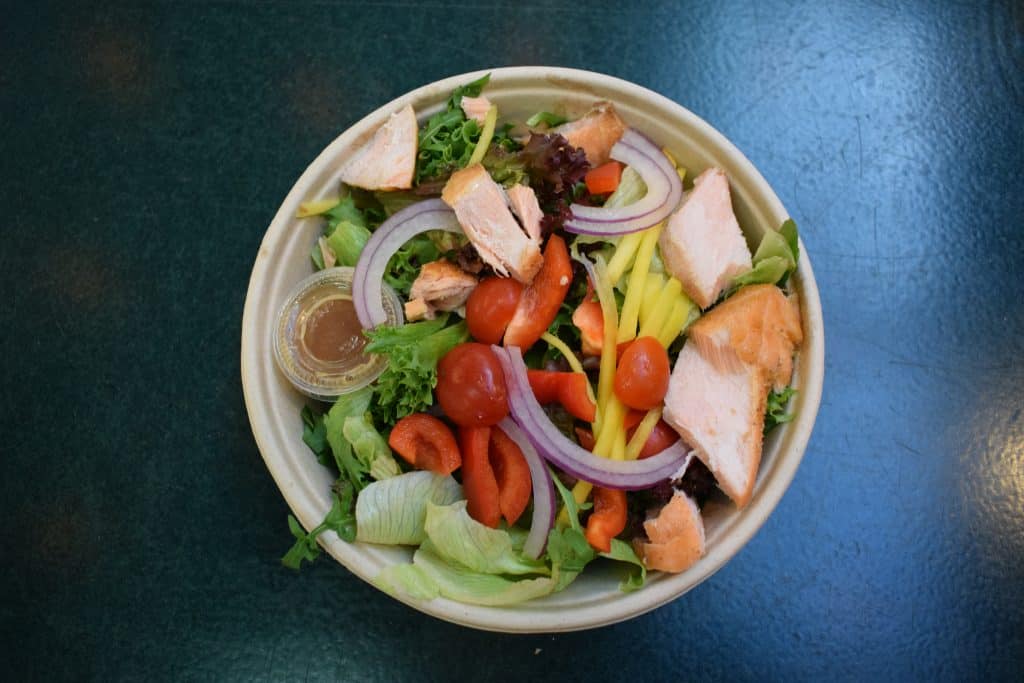

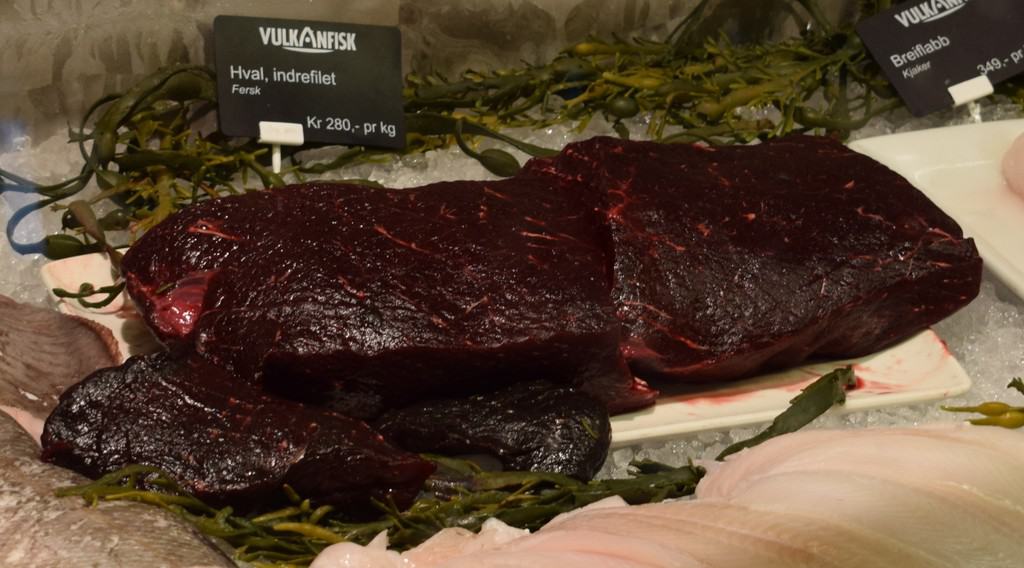
Oslo Fitness
One workout will cost you 100Kr at Fresh Fitness in central Oslo. It’s a very nice large gym, with plenty of machines and free weights. And it wasn’t too crowded on a Friday evening.
So, you can work out for the price of a beer.
Otherwise, jog along the ocean. There are large sidewalks along the peninsula and harbor, and you don’t have to interrupt your run at the stoplights all the time.
The Well(ness) Spa
The Well spa seems to be the best sauna/spa option in Oslo. There’s a bus going to the spa and back for 50kr from the Radisson hotel (Oslo square) in central Oslo. It’s not a nudist spa, but you are allowed to go clothes-free if you want (on every day except Tuesday).
There are plenty of saunas and intense Aufguss sauna sessions where a fragranced ice ball is melted on the sauna coals. During the Aufguss, the Sauna-Master uses a towel to heat up the room (as explained in the Berlin post). Plus, there are indoor heated and outdoor swimming pools. The outdoors jacuzzi would especially be a unique experience in the middle of a snowy winter.
You can pay extra for a Rhassoul Clay Bath, Turkish Hamman or duo massages. It’s a nice place for couples to go and relax.
Conclusion
Although Oslo is not that special for health and wellness, it’s still relatively inexpensive to reach by plane. Thus you could check in for 2 or 3 days, tick the city off your travel bucket list, then head out to the countryside. But if you never visit Oslo, don’t feel bad, as there are much better wellness destinations in the world. For example, in Scandinavia, I found Helsinki more interesting (and a little more affordable).
Oslo Health travel Junkie challenge
Simply visiting Oslo and surviving on a budget is a decent challenge by itself.
Oslo Health Travel Junkie Scale
Fitness activities – 7
Food – 7.5
(The food is good. The only problem is it’s insanely expensive.)
Cost of traveling – 1
(Since its the most expensive city in the world, the cost of traveling has to be at the bottom end of the scale.)
Other Wellness-related activities – 7.5
Overall rating: 60%
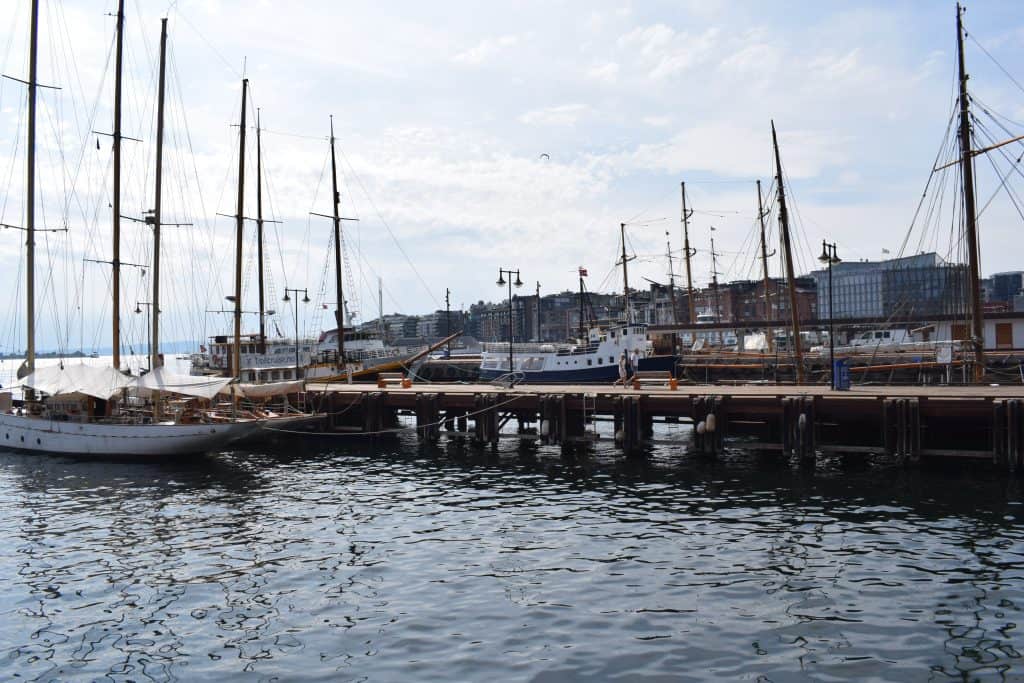
Have you ever visited Oslo (Norway)? Write your tips below for other travelers! Otherwise, post your questions.
